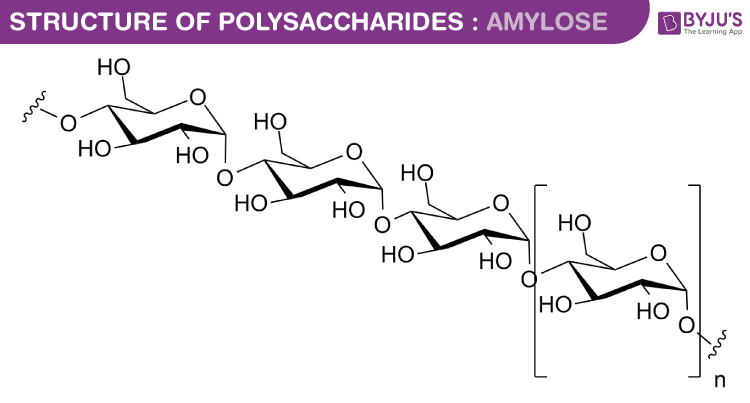What are Polysaccharides?
These are referred to the complex biomolecules which are made of a chain of monosaccharides. The bonds in which are being formed here are glycosidic in nature. In here the commonly formed monomers are simple sugars such as glucose, fructose etc.
Types of Polysaccharides
There are fundamentally two types of polysaccharides:
- Homo-polysaccharides- These are those which are made up of one kind of monosaccharide elements such as glycogen, starch etc
- Hetero-polysaccharides- These are those which are made up of two or more kind of monosaccharides elements such as hyaluronic acid etc.
Structure of Polysaccharides

As we are aware that a polysaccharide is formed by the same process as monosaccharides and via glycosidic bonds. The bond consists of a molecule of oxygen bridging two carbon rings. When a carbon of one molecule loses a hydroxyl group and hydroxyl group of another monosaccharide loses hydrogen, a bond is formed. The reaction is known as dehydration reaction because one molecule of oxygen and two molecules of hydrogen are expelled.
The structure of the molecules combined defines the polysaccharides structure and properties.
Examples of Polysaccharides
Depending upon the functionality, polysaccharides form an important part when comes cell structure and functions and few examples are:
- Polysaccharides which are used for the purpose of energy storage will provide easy access to the monosaccharides which is constituted inside. On the other hand, the polysaccharides used for support feature usually constitutes a long chain of monosaccharides in order to make a fibrous structure.
- Polysaccharides which are found in cell walls of plants are called structural polysaccharides. Such examples of polysaccharides are cellulose and chitin.
- Storage polysaccharides are responsible for being converted to energy later for body functions. Such examples of polysaccharides are starch for plants glycogen for animals.


Comments